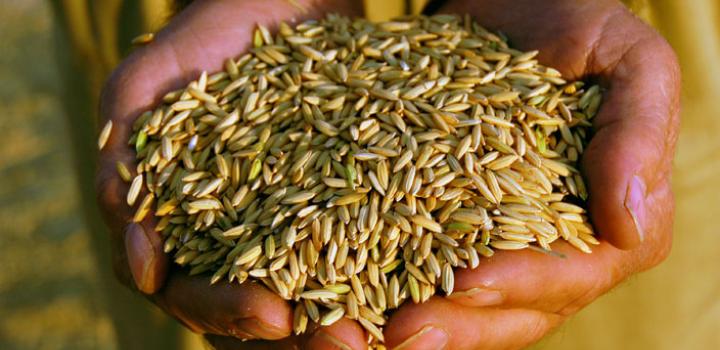New rice variety developed
by January 16, 2020 8:10 am 883 views

Adverse weather conditions, especially rising temperatures, have had a significant impact on rice in recent years. Scientists have been working to develop different varieties of rice to tackle these conditions and the University of Arkansas Division of Agriculture recently announced that a new type of long grain, Clearfield rice, CLL 16, will soon be available to farmers in 2021.
Karen Moldenhauer, professor and rice breeder for the Division of Agriculture’s Arkansas Agricultural Experiment Station, said CLL16 has excellent rough rice yields, averaging 205 bushels per acre, slightly better than Diamond, which averages 204 bushels per acre.
“Horizon Ag is excited to market CLL16, developed in partnership with the University of Arkansas System Division of Agriculture and BASF,” said Dr. Tim Walker, Horizon Ag general manager. “This variety promises a step change in yield potential, while offering industry leading blast tolerance and a milled product that continues to bring back the Gold Standard rice the Southern USA has historically produced.”
CLL16 is resistant to blast in Arkansas growing conditions, Moldenhauer said. It has demonstrated good milling yields, averaging 63% whole kernel and 69% total milled rice for samples from Arkansas Rice Performance Trials across the state.
“We recognize that the Clearfield technology continues to offer significant benefits and ROI potential to rice farmers in the region, particularly when combined with top-performing varieties like CLL16. Horizon Ag is proud to continue to partner with the elite university breeding programs which benefit the industry immensely,” he added.
CLL16 is a very stable cultivated variety with an early maturity date, averaging 86 days to 50% heading, similar to CL172 and Wells and about four days earlier than Roy J, Moldenhauer said. The plant is standard height with a 36-inch canopy, similar to Diamond.
“Grain weight and size are similar to Diamond with nice long, plump kernels,” Moldenhauer said. “It has typical southern U.S. long-grain cooking quality. The plants have very strong straw, indicating good lodging resistance. It is rated moderately susceptible to false smut and susceptible to sheath blight and bacterial panicle blight.”
Nitrogen fertilizer requirements were 135 pounds per acre in performance trials, she said.
Clearfield rice was developed at Louisiana State University from a breeding line of rice with a naturally occurring genetic mutation that was tolerant to the imidazoline family of herbicides, said Bob Scott, Rice Research and Extension Center director.
Scientists at LSU licensed the original Clearfield lines to American Cyanamid, now BASF, which later shared the breeding material with the Division of Agriculture, Scott said. Horizon Ag is a seed technology company licensed by BASF to market Clearfield rice varieties.
Breeder seed for CLL16 will be maintained at the Rice Research and Extension Center. It will be distributed to growers by Horizon Ag.
